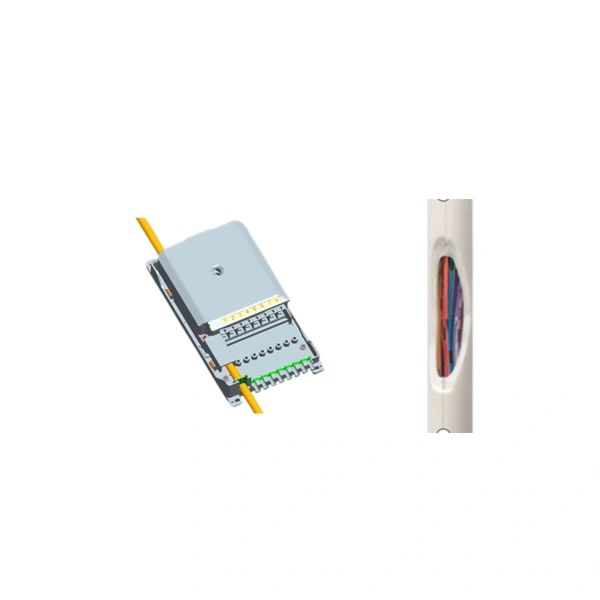Overview

Indoor optical cables play a crucial role in ensuring high-speed and reliable communication networks. However, to maintain optimal performance, it is essential to implement effective sealing and dust-proof measures. This article explores the key factors involved in achieving effective sealing performance and the necessary measures to prevent dust accumulation within indoor optical cables.
The importance of sealing performance
Sealing performance is vital to protect indoor optical cables from moisture, dust, and other environmental factors that may degrade their performance. Proper sealing prevents moisture penetration, which can lead to signal loss, corrosion, and eventually, failure of the cable. Dust accumulation, on the other hand, can obstruct signal transmission and reduce the lifespan of the optical cable. Therefore, a robust sealing mechanism is necessary to ensure uninterrupted transmission and longevity of indoor optical cables.
Prominent sealing techniques
1. Mechanical Sealing: Mechanical sealing involves using various methods to create a physical barrier against external elements. This technique is widely adopted due to its simplicity and cost-effectiveness. Common mechanical sealing methods include heat shrinkable sleeves, grommets, and connectors with rubber gaskets. These solutions provide reliable protection against moisture and dust ingress.
2. Gel Sealing: Gel sealing is another effective method used to achieve a high level of protection against moisture and dust. The gel-like substance is applied to fill the gaps and spaces around cable connections and terminations. Once solidified, the gel forms a durable seal that prevents any external contaminants from entering the cable. Gel sealing is particularly advantageous in areas prone to high humidity or where constant exposure to moisture is expected.
3. Water-blocking technology: Water-blocking technology involves incorporating moisture-resistant materials within the cable design. These materials, including gel-filled buffer tubes, water-blocking yarns, or tapes, create a barrier that inhibits moisture penetration. By limiting moisture ingress, water-blocking technology significantly enhances the cable's resistance to corrosion and signal degradation.
Effective dust-proof measures
1. Cable jacket design: A well-designed cable jacket can effectively prevent dust from entering the cable. Utilizing materials with low dust adhesion properties and incorporating tight-fitting jacket structures can minimize dust accumulation. Additionally, regular inspections and cleaning of cable jackets are essential to maintain optimal dust resistance.
2. Cable routing and management: Proper cable routing and organization play a significant role in preventing dust accumulation. Ensuring cables are not excessively bent, maintaining appropriate spacing between cables, and implementing cable management solutions such as raceways and trays can minimize dust accumulation and simplify maintenance efforts.
3. Regular maintenance: Regular inspection and maintenance are crucial for identifying and addressing potential issues early on. Periodic cleaning and dust removal should be conducted to prevent dust build-up and maintain optimal cable performance. In particularly dusty environments, compressed air or vacuum cleaning should be employed to remove dust from cable connections and terminations.
Conclusion
Effective sealing performance and dust-proof measures are essential to ensure the optimal performance and longevity of indoor optical cables. Implementation of appropriate sealing techniques such as mechanical sealing, gel sealing, and water-blocking technology, along with proper dust-proof measures including cable jacket design, cable routing, and regular maintenance, are paramount in mitigating potential risks and maintaining uninterrupted communication networks.
By adopting these measures, network providers can guarantee smooth and reliable transmission while safeguarding their investment in indoor optical cable infrastructure.



